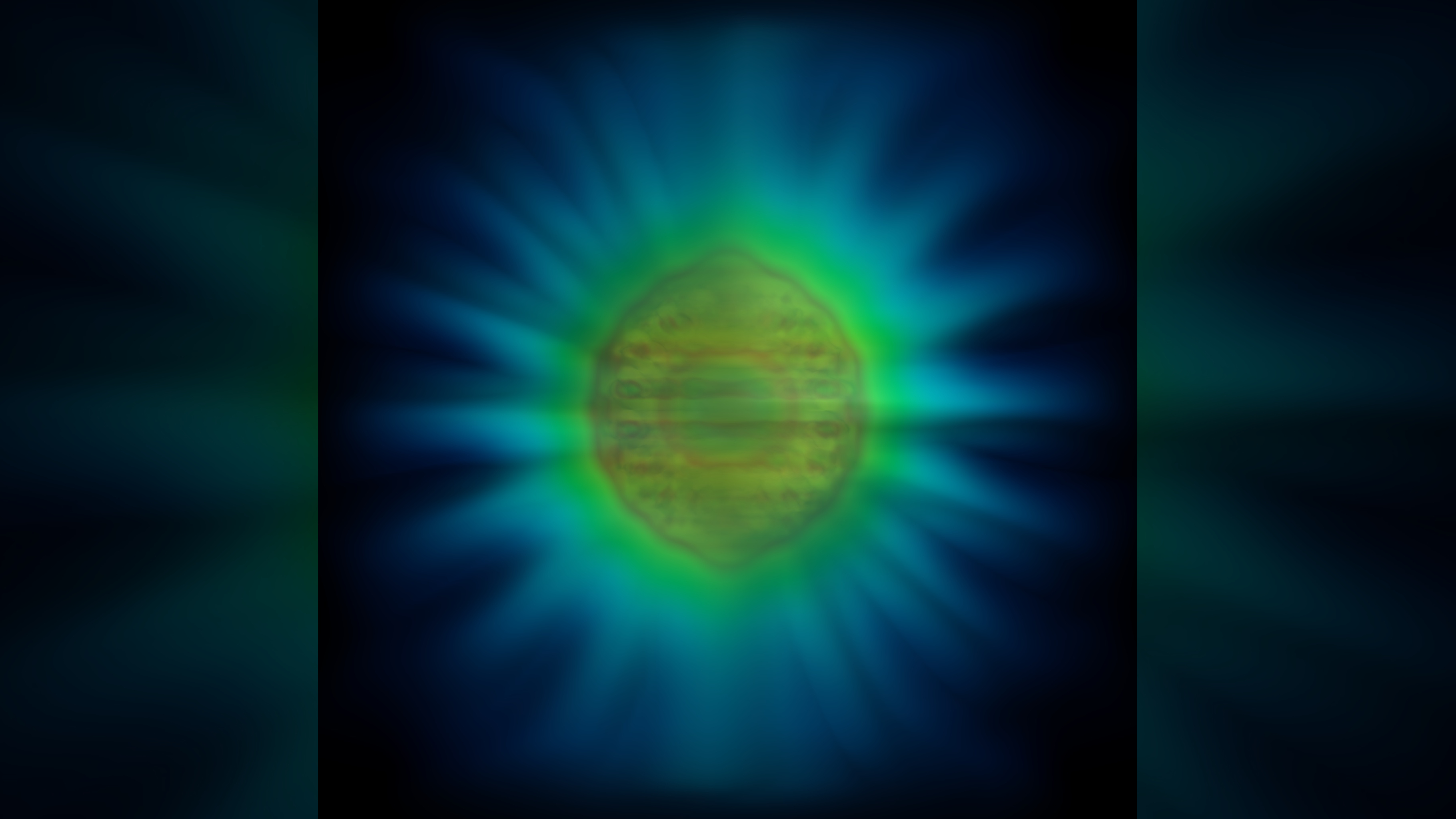The shape of light: Scientists reveal image of an individual photon for 1st time ever
Using a groundbreaking new technique, researchers have unveiled the first detailed image of a photon — a single particle of light — ever taken.

Researchers in Birmingham have created the first image of a photon, a lemon-shaped particle of light emitted from the surface of a nanoparticle. The theory that made this image possible, reported Nov. 14 in the journal Physical Review Letters, enables scientists to calculate and understand various properties of these quantum particles — which could open up a range of new possibilities across fields such as quantum computing, photovoltaic devices and artificial photosynthesis.
Light's quantum behavior is well established, with over 100 years of experiments showing it can exist in both wave and particle form. But our fundamental understanding of this quantum nature is much further behind, and we only have a limited grasp of how photons are created and emitted, or of how they change through space and time.
"We want to be able to understand these processes to leverage that quantum side," first author Ben Yuen, a research fellow at the University of Birmingham in the U.K., told Live Science in an email. "How do light and matter really interact at this level?"
However, the very nature of light means the answer to this question has almost limitless possibilities. "We can think of a photon being a fundamental excitation of an electromagnetic field," explained Yuen. These fields are a continuum of different frequencies, each of which could potentially become excited. "You can split up a continuum into smaller parts and between any two points, there's still an infinite number of possible points you could pick," Yuen added.
The result is that the properties of a photon are heavily dependent on the properties of its environment, leading to some incredibly complex math. "At first glance, we would have to write down and solve an infinite number of equations to reach an answer," Yuen said.
To tackle this seemingly impossible task, Yuen and co-author Angela Demetriadou, professor of theoretical nanophotonics at the University of Birmingham, employed a clever math trick to dramatically simplify the equations.
Breaking space news, the latest updates on rocket launches, skywatching events and more!
Introducing imaginary numbers — multiples of the impossible square root of -1 — is a powerful tool when handling complex equations. Manipulating these imaginary components allows many of the difficult terms in the equation to cancel each other out. Provided all imaginary numbers are converted back to real numbers before reaching the solution, this leaves a much more manageable calculation.
"We transformed that continuum of real frequencies into a discrete set of complex frequencies," explained Yuen. "By doing that, we simplify the equations from a continuum into a discrete set which we can handle. We can put those into a computer and solve them."
The team used these new calculations to model the properties of a photon emitted from the surface of a nanoparticle, describing the interactions with the emitter and how the photon propagated away from the source. From these results, the team generated the first image of a photon, a lemon-shaped particle never seen before in physics.
Yuen stressed, however, that this is only the shape of a photon generated under these conditions. "The shape changes completely with the environment," he said. "This is really the point of nanophotonics, that by shaping the environment, we can really shape the photon itself."
The team's calculations provide a fundamental insight into the properties of this quantum particle — knowledge that Yuen believes will open up new lines of research for physicists, chemists and biologists alike.
"We could think about optoelectronic devices, photochemistry, light harvesting and photovoltaics, understanding photosynthesis, biosensors, and quantum communication," Yuen said. "And there will be a whole host of unknown applications. By doing this kind of really fundamental theory, you unlock new possibilities in other areas."

Victoria Atkinson is a freelance science journalist, specializing in chemistry and its interface with the natural and human-made worlds. Currently based in York (UK), she formerly worked as a science content developer at the University of Oxford, and later as a member of the Chemistry World editorial team. Since becoming a freelancer, Victoria has expanded her focus to explore topics from across the sciences and has also worked with Chemistry Review, Neon Squid Publishing and the Open University, amongst others. She has a DPhil in organic chemistry from the University of Oxford.
